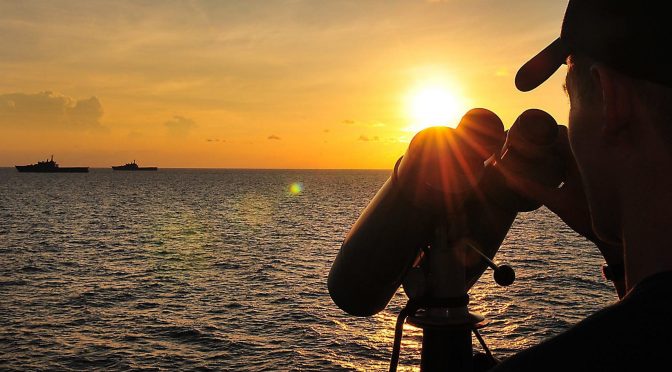By Dr. Sam Tangredi
CIMSEC readers,
You may have heard the President of the Naval War College established an Institute for Future Warfare Studies (IFWS).
Recently, IFWS was brought under the Strategic and Operational Research Division (SORD) of the Center for Naval Warfare Studies (CNWS) – the Naval War College’s research arm.
As per the charter:
The Institute for Future Warfare Studies (IFWS) was established in 2017 to serve as a focal point for research and analysis on future warfare trends and challenges, the future operating environment, warfare innovation, and future strategy and force structures.
However, we are very cognizant that there are at least 30 other organizations in the Department of Defense such as Federally-Funded Research and Development Centers and associated think tanks that research “futures.”
In organizing the Institute, the obvious questions were: What makes IFWS different? How can IFWS add value? How can it gain credibility and have an impact?
To be different, add value, and have an impact, we have adopted a research agenda that is stated thus:
The current IFWS research program focuses on the options, assumptions, costs and risks of near-term decisions that will affect the Navy and the Nation in the years to 2050 and beyond.
Our primary products will include a series of specific-issue working papers. The working papers are designed to analyze an existing or potential issue impacting the Navy/DoD into the future that is NOT being examined by the Navy staff, Joint Staff, or other DoD organizations. We are trying to avoid duplicating other efforts.
CIMSEC has kindly posted the first working paper, A Preliminary Examination of the Proposal to Add Sea-Based Intermediate-Range Ballistic Missiles to the U.S. Navy Future Fleet.
Sea-Based IRBMs – IFWS Working Paper 1aYou will notice that it has a very particular format – although written in full sentences and paragraphs, it is bulletized so it can be quickly absorbed by section. There is a narrative, but it is added as an appendix and our intent is to also publish the narratives separately. (In the case of the first, the narrative happened to be published before the working paper.) You will also notice there is no advocacy – it is a balanced analysis: statement of problem, proposal, arguments for, arguments against, costs, risks, and alternatives. Again, designed to have an impact on staffs and decisions-makers by making them consider (in a non-threatening way) issues they are not analyzing.
The reason I am detailing this is because I would like to invite all CIMSEC readers to comment on this working paper… and perhaps even participate as an outside member of IFWS and produce a working paper for this series.
We intend to keep future working papers in the same (or very similar) format and standards will remain very high. But if you have an interest in participating, have a suggestion for an issue we should address, or simply have a comment on the first working paper, please feel free to contact us at IFWS_DIRECTOR@usnwc.edu.
Thank you for your interest in international maritime security.
Dr. Sam J. Tangredi is Professor of National, Naval and Maritime Strategy and Director of the Institute for Future Warfare Studies at the U.S. Naval War College.
Featured Image: SOUTH CHINA SEA (Jul. 14, 2010) – U.S. Coast Guard Seaman Michael Luna stands lookout watch as two Republic of Singapore amphibious dock landing ships pass by U.S. Coast Guard Cutter Mellon (WHEC 717) during an exercise as part of Cooperation Afloat Readiness and Training (CARAT) Singapore 2010. (U.S. Navy photo by Mass Communication Specialist 2nd Class David A. Brandenburg)


• If this is envisioned as a first strike conventional ballistic missile, it might be seen as a first strike nuclear attack and cause a nuclear response.
• If the concept is to suppress/destroy DF21D/DF26 after a conflict has started, the viability of the proposal would require a detailed analysis of the realities of the US extended kill chain timeline from a detected launch of a DF21 against a carrier task force to the subsequent impact of a ship-based Pershing II ballistic missile on the DF21D/DF26 launch complex, to include consideration of the likelihood the launch complex would reposition in anticipation of “counter battery” response.